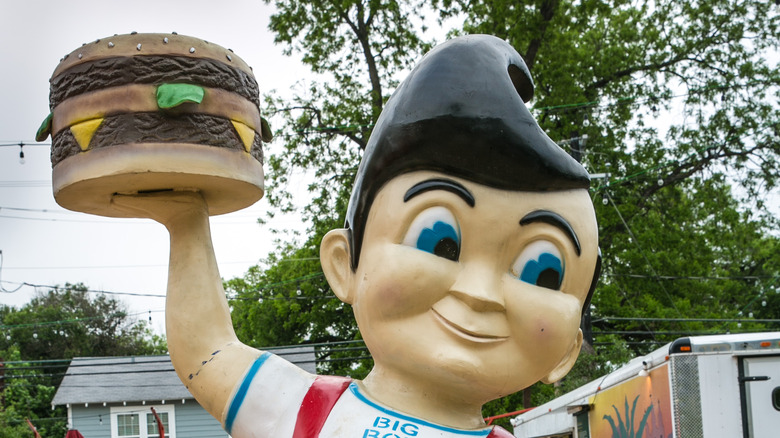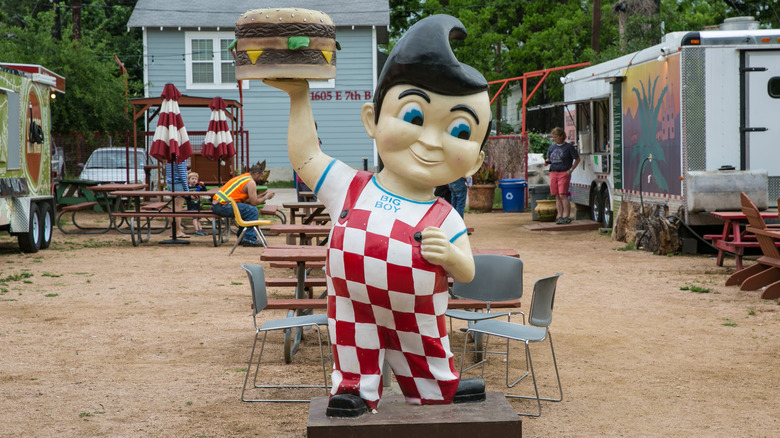The Real Inspiration Behind Big Boy Restaurants
There is an undeniable appeal to many fast food chains — not just for their great food, but also their kitschiness and mythical lore. Take Big Boy Restaurants for example. As explained by Thrillist, this brand's nostalgia is on another level. Not only has it been the epicenter of many a Hollywood film, but it has its own comic series designed by Stan Lee. One location even has a booth dedicated to The Beatles who paid a visit in the 1950s.
But the real draw here is the restaurant's very recognizable mascot. An oversized statue of a lovable kid with a big grin and pompadour, dressed in overalls, and holding up one of the chain's famous "double-decker" burgers. (By the way, that burger was the first of its kind and was born from a simple experiment of founder Robert C. Wian, who at the time didn't realize that he'd created something new and delicious that became wildly popular and often replicated.)
A real-life child inspired Big Boy's branding
When Robert C. Wian opened the first Big Boy location in Glendale, California in 1936 (selling his car to do so), he probably never imagined a little kid would become the restaurant's biggest inspiration.
As noted by Thrillist, in the early days, one of the restaurant's most loyal customers was a 6-year-old, Rick Woodruff. He adored the restaurant's burgers so much, he would often hang around, doing chores like sweeping the place to score an extra freebie. Wian would playfully call Woodruff "big boy" thanks to his love for food and soon ended up changing his eatery's name from Bob's Pantry to Bob's Big Boy in his honor.
Another frequent customer, a film animator, couldn't help but notice Woodruff and ended up drawing a sketch on a napkin one day — and that's how the brand's iconic mascot was born.
Woodruff really did in fact grow up to be a big guy: over six feet tall and weighing 300 pounds, says Thrillist. According to the New York Times, Woodruff was pretty popular in Glendale, which is where he remained all those years. Sadly, he passed away at the age of 54 in the 1980s after a prolonged illness. Yet, he remains the face of the brand to this day, immortalized in the statue at locations across the US.

